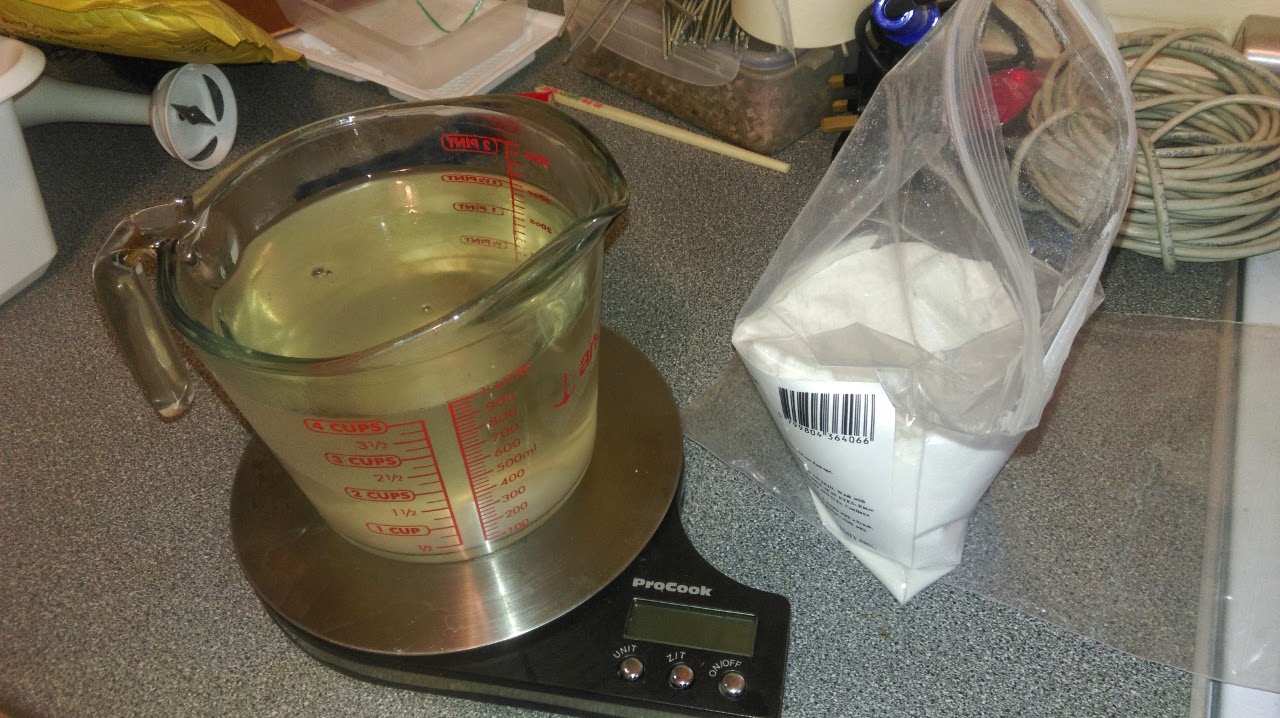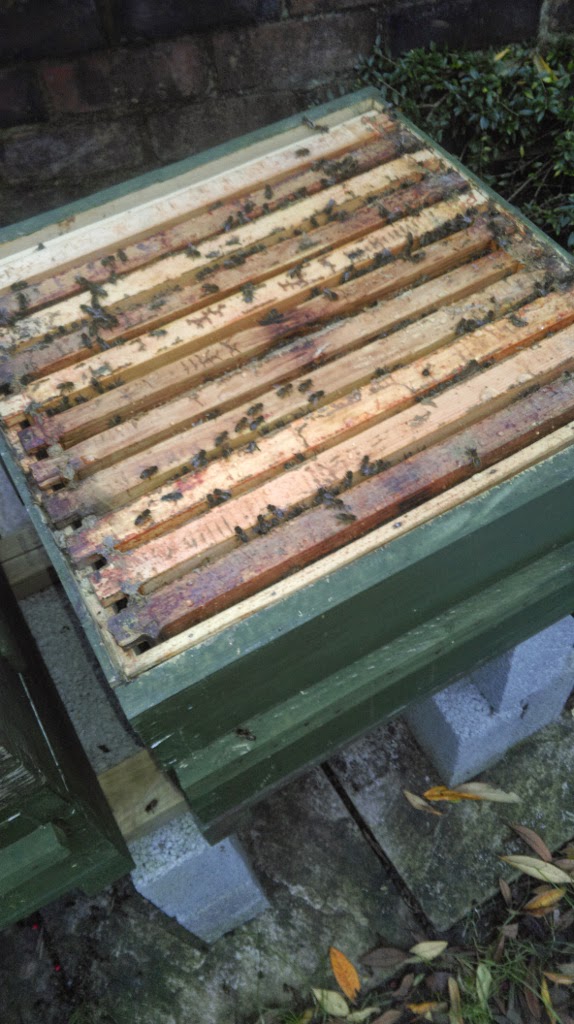 |
| Can't see any mites, but they'll be in there somewhere.. |
The treatment we use is a solution of organic acid and sugar syrup. Lactic, Formic or Oxalic acid is used with the latter being the most popular going by the forums and articles posted. I gather there's been a recent change in the legal status of Oxalic Acid to treat mites so it's now comes under the control of the Vetinary Medicines Directorate and is considered an Annex II product whatever that means (seriously I don't have a clue). The upshot is it needs to be prescribed by a vet, however it's still being sold as a hive cleaning product so beekeepers can still get hold of it. So er yeah I'm actually applying Oxalic Acid to clean the hive, specifically the hive floor between the frames. If it goes on some bees that happen to be in the way and happens kills a 90% of the mites well that can't be helped :)
The Oxalic acid solution isn't actually that wonderful for the bees but it's 70 times more damaging to the mites. There's different recommendations of the strength of solution to use and a lot of studies have been done on the balancing act between minimising it's effect on the bees and maximising it's the impact on the mites. 3.2% is the strength of solution sold by people like Fragile Planet and Thorne. Confusingly there's two different ways to measure it there's the % concentration or the % by weight of crystals to syrup solution .
 |
| Do not eat. |
Previously I've bought ready mixed Oxalic acid solutions but this year I decided to save a little coin and mix my own, so I bought half a kilo of Oxalic Acid Dihydrate Crystals. It's very cheap stuff. The recipe I followed was from Montgomery Beekeepers Association website 1KG of sugar dissolved in 630ml or water, I then decanted a litre into a jug and added 35g of Oxalic Acid Dihydrate crystal. I didn't need a litre of the stuff but as the article notes the more solution you make the lower the error margin when you add the oxalic crystals.
 |
| Add caption |
We've had some really cold days and nights recently but even though it was 22nd December the weather had warmed to 14.5 degrees Celsius so the bees were flying. I started with Hive4 which I'd thought had a small population but there were 9 seams of bees to treat so they're more populous than I expected. They were very placid and I was able to treat them without a problem.
 |
| Hive3, the brief calm before the storm. |
Hive3 is my aggressive colony. I'd thought with they might've calmed down a little having requeened them a few months ago, left them alone save for feeding and it being December. They hadn't. They'd done an excellent job of gluing the crownboard to the frame tops so it took me a long time to prise it off, once the hive was open it wasn't long before they were on the attack. After a few puffs on the smoker I quickly administered one syringe worth of solution and was rewarded with a sting on the wrist. I decided to walk away and let them calm down before continuing so wandered to the other side of the garden whilst a little contingent of angry bees followed me bouncing of my head. Eventually they subsided after puffing a lot of smoke around me so I returned to the hive, I repeated the process twice to complete their treatment before moving onto Hive1. I'm thinking I should probably have done the aggressive bees last as the amount of alarm pheromone they're probably throwing out may well affect the other colonies. Luckily the bees in Hive1 didn't seem that bothered by my opening them up and trickling acid on them. Hive2 weren't quite so relaxed with one bee stinging my leg and I later found another had crawled up the wrist of my glove.
 |
| All finished. |

















